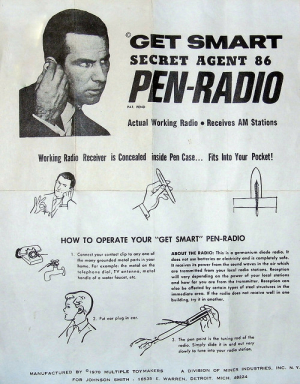Demystifying Differentiation in the Classroom
Mission (Im)possible: How to engage a diverse classroom without leaving any students behind
 Good day, teacher. Your mission, should you choose to accept it:
Good day, teacher. Your mission, should you choose to accept it:
Today you will begin facilitating a unit on weather to a gifted, insecure left-brain thinker, a gifted and disengaged right-brain thinker, an average student, and a lower-level student who, truthfully, is still struggling to understand your previous unit.
However, there are a few catches:
- You actually have 21 students, not 4
- You also need to prepare them for standardized testing
- You don’t have time to create curricula to cater to each student’s level of ability
- You can’t leave anyone behind; each student needs to gain critical thinking skills
Does this mission sound daunting? Impossible even? Does it also sound all too familiar?
“Difficult” should be a walk in the park for you.
As educators face these daily challenges, trainer Bob Iseminger offers hope and inspirational ideas in the 6-hour course, “Demystifying Differentiation in the Gifted and Talented Classroom.”
Mr. Iseminger is an educator, speaker, and author with over 25 years of experience in public education. He currently serves as a staff development consultant for school districts nationwide in addition to making presentations at state gifted conferences.
Though most educators have heard the term “differentiated” in relation to G/T instruction, many have the mistaken notion that it refers to the impossible task of teaching the same content multiple times and ways for the variety of students in their classrooms.
Mr. Iseminger’s approach to differentiation in the classroom is much more realistic, time conscious, and extremely effective. He even gets to the root of many of the challenges unique to modern classrooms – a new breed of brain.
State-of-the-Art Technology: Re-Wiring Gifted Brains
 Forget exploding pens and transforming cars; technology has reached a whole new pinnacle.
Forget exploding pens and transforming cars; technology has reached a whole new pinnacle.
Thanks to an excess of digital media use, the brain of today’s student looks very different from those of yesteryear. And, as Mr. Iseminger demonstrates, differentiation in the classroom is the key to engaging this new breed of brain.
The Kaiser Family Foundation’s 2012 Research Report on Students’ Interaction with Digital Media found that children ages 8 to 18 are spending more than 53 hours a week (7.5hours/day) using entertainment media. This includes use of iPods, talking/texting/watching videos on cell phones, Web surfing, social media, TV, movies and video games.
How is this changing the brains of G/T students? The high-speed, heavily visual, and frankly anti-social world of modern digital media has created a new crop of right-hemisphere dominant gifted students, in a realm historically filled with left-hemisphere learners.
| The left (Auditory/Sequential) | The right (Visual/Spatial) |
|
|
Learn more from Dr. Linda Silverman at www.visualspatial.org
How do we engage fast-paced G/T learners within a diverse classroom, especially when the neural effects of digital media come into play?
Here are a few of the multiple tips and ideas covered in “Demystifying Differentiation in the Gifted and Talented Classroom”:
 Pair left-hemisphere G/T students with right-hemisphere G/T students (discussion buddies) to get the most dynamic class discussions and help right-hemisphere students develop face-to-face skills
Pair left-hemisphere G/T students with right-hemisphere G/T students (discussion buddies) to get the most dynamic class discussions and help right-hemisphere students develop face-to-face skills- Use patterns, manipulatives, and hands-on activities to engage right-hemisphere learners
- Use tiered assignments to get level-appropriate responses using only one lesson
Your Mission: Start Differentiating Today
 The mission is not for the faint of heart, but it’s not impossible! Suit up, jump in, and learn how to create order out of chaos with differentiation in the classroom. Check out the 6-hour course, “Demystifying Differentiation in the Gifted and Talented Classroom.”
The mission is not for the faint of heart, but it’s not impossible! Suit up, jump in, and learn how to create order out of chaos with differentiation in the classroom. Check out the 6-hour course, “Demystifying Differentiation in the Gifted and Talented Classroom.”
As always, should you or any of your Impossible Mission Force be caught or killed, the secretary will disavow any knowledge of your actions. This post will self-destruct in five seconds. Good luck, teachers.
 Delivering Quality Training – No Matter Where You Are
Delivering Quality Training – No Matter Where You Are
Did you know that this course is mobile ready? That means you can complete the course on your smartphone, tablet, laptop, desktop computer, or any other mobile device!
Photos courtesy of Creative Commons & Flickr via Rise0011, France1978, jimmiehomeschoolmom, & Gonzo fan2007
